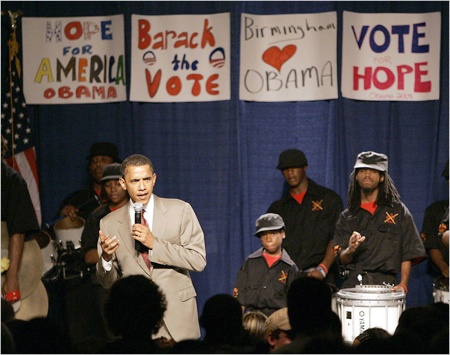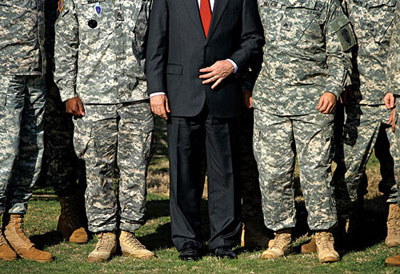Notes
Obama's Bake Sale Strategy (So-Called)
Given Obama’s success in raising the big bucks from fat cats as well as “little people,” look at how the accomplishment is characterized in the following snip from this July 17th NYT article:
The combination has enabled Mr. Obama to raise more money for his primary campaign in the first six months of the year — $58.4 million — than any other candidate in either party. Just as important, his campaign advisers say, he has built a unique roster of small donors who may give again or volunteer as the race continues, and which enables them to portray his campaign as powered by a vast army of regular people across the country.
The key phrase is “enables them to portray.”
Having raised a large bulk of funds from small donations, there is no reason the Obama campaign shouldn’t feel good about it, and claim credit for grass roots popularity. But the Times — in the same way it consistently doubts John Edwards’ concern for poverty — somehow feels the need to suggest that a sneaky scheme is afoot to frame Obama as popular with the little guy.
That suggestion even plays out in the article title (“Obama’s Camp Cultivates Crop in Small Donors”). Notice the subtle use of “in” rather than “of.” The difference puts the emphasis not on the association to the small guy, but on the “crop” or cash. With the phrasing, the Obama camp is framed as less interested in cultivating small donors than in using small donors for their own growing needs. This supposed posing comes through again at the beginning, and especially, the end of the article.
The opening scene describes Obama slipping away from a “less exclusive crowd of 10,000” in Oakland to a “luxurious” dinner at the Mark Hopkins with “a few hundred lawyers, executives and investors.” The Oakland crowd “spent $40,000 on Obama T-shirts, baseball caps, buttons and other knickknacks” while “paying nothing” to hear the Senator while the high rollers (in a non sequitur, if you ask me) “drank a boutique beer with Mr. Obama’s face on the label and contributed more than $1 million in $2,300 checks.”
On the surface, there is nothing seemingly manipulative about juxtaposing the two settings. Not, that is, until you get to the end of the article where you have the repeated suggestion that small donations are being tactically used to create an impression (often pitched at the high rollers) of populist support.
The article seeds the idea over and over again, mostly by putting words in the mouths of Obama “advisers” or “fundraisers.” Near the end of the piece, for example we’re told how: “the image of Mr. Obama’s army of small contributors had quickly become an advantage in asking for big checks as well.”
In the context of the suggestion, let’s consider the article’s accompanying photo.
What I find most unique about this image (besides the absence of boutique beer-swilling lawyers and executives) are the homemade signs. In a campaign era defined by slick marketing and professional printed backdrops and placards, the presence of the hand made is particularly striking (just like the impact of those one or two cut-and-paste valentines when the rest of the school class went the Hallmark route.)
When you plug this picture into this kind of article — suggesting that Obama is branding himself as the man of the people (or, excuse me, the brigades of t-shirt sellers and key chain purchasers), then the photo can play like a fine-crafted package — to strategically look mom-and-pop, and not very crafted at all.
(image: Rob Carr/A.P. July 16, 2007. Birmingham, Ala. nytimes.com)



Reactions
Comments Powered by Disqus